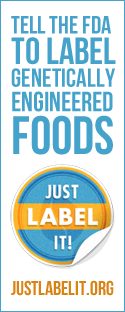|
Is “sustainability” just another buzzword, or will it have a genuine impact on how farmers in Western Canada do business?
Also read, Canadian Centre for Food Integrity launched to connect farm gates to dinner plates. Denis Trémorin, director for sustainability at Pulse Canada, believes there is substance behind “sustainability”— but it might not mean exactly what you think it means. Trémorin says sustainability is about operating in a socially, economically and environmentally sustainable manner. “In some areas of the world, the social and economic aspects are more important when it comes to agriculture. Cocoa production in West Africa is a good example — you have farmers who don’t own the land and are disconnected with their customers. So you need to focus on that first, and the environmental aspect second.” What about Western Canada? Trémorin says that since pricing is fairly transparent, farmers have reasonably effective access to markets. As well, Canadian legal standards protect farmers’ rights, so, he says, our main focus should be on the environmental aspect of sustainability. There’s also a tendency at times to associate “sustainability” with niche or direct-to-consumer cropping, but David MacInnes, president and chief executive officer of the Canadian Agri-Food Policy Institute (CAPI), says it’s a “pan-agri-food sector” issue that applies just as much to commodity crops. “With a changing climate, with extreme weather events, with the prevalence of droughts, of heat events, with new insects facing agriculture across the country, it will be a constantly unfolding battle to be a reliable, quality supplier,” MacInnes says. And being seen as a reliable, quality supplier is as crucial as farmers’ adoption of sustainable measures, as far as the market is concerned. “The marketplace is very chaotic with initiatives going on all over the place. We need to step back from a strategic standpoint and ask how Canada can use its advantages to position ourselves on the sustainability radar of investors and supply chains,” says MacInnes. “There needs to be a benefit to the agri-food sector, but raising that bar and improving performance allows us to demonstrate the care being taken in our agri-food practices.” What is included under the umbrella of sustainable practices? There’s no one-size-fits-all version of sustainability that all producers can or should adopt on the farm, says Trémorin. “Sustainable practices are very site specific in terms of what works best for your farm or your region,” he says. “No-till is a classic ‘good’ practice in a lot of Western Canada, but there are a lot of areas in Canada where it doesn’t fit — you don’t get good yields, or it’s hard to work with, especially in Eastern Canada where there’s a lot of moisture.” Trémorin points to Fertilizer Canada’s 4Rs as an enduring example of smart sustainability thinking. “That type of practice, in terms of making sure you’ve got the right rates, the right source of fertilizer, the right placement and timing based on your region — that is a sustainable practice. It’s not a ‘practice’ per se but a management mindset.” Measuring Sustainability Environmental sustainability, needless to say, is tough to measure. But some companies are asking for information directly from the farm or from suppliers in terms of what sustainability looks like on individual operations. Trémorin says that in some cases, there’s actually a checklist questionnaire that flows to the farmer, asking whether the farmer soil samples, how the farmer stores pesticides, or whether the farmer has contracts with labourers, for example. One high-profile farmer self-assessment tool is the Sustainable Agriculture Initiative (SAI) Platform, which aims to create a pre-competitive checklist to set a standard for the industry to follow. The tool, “Farm Sustainability Assessment,” provides a benchmark for farmers to assess their own sustainability performance. Trémorin is leading a federal Canadian project with six industry partners to develop a process-based tool called the Canadian Field Print Calculator that allows farmers to input information on practices related to land use efficiency, soil erosion risk, energy use, climate impact and soil carbon release. The major hurdle facing uptake of tools like these is the lack of ready incentives for participating farmers. Few markets are asking for this information. “What’s going to have to happen is that these types of systems and asks will have to be part of a package that makes them attractive to growers,” says Trémorin. But at the same time, environmental sustainability is all about efficiency, and efficiency means profitability. “With the tool-based piece, because you’re capturing data from growers, there’s an opportunity to share that aggregated data back to them. I see value chains using this information to help producers improve and make more money. There’s so much alignment between sustainability and making money,” says Trémorin. MacInnes believes trust is a critical piece of the puzzle when it comes to sustainability. Last year, CAPI hosted a forum that focused on trust and the Canadian food system. “When you wrap it all up, sustainability has a significant role to play, but really the issue that underscores it all is trust. Trust might mean ‘food safety,’ but what we heard (at the conference) is that trust is about safety, quality, the level of nutrition in food, the health impacts, environmental sustainability, and about reliability of supply,” MacInnes says. Because trust is crucial in ensuring the health of the agri-food system long-term, MacInnes says the development of metrics to measure the effectiveness of sustainability programs is a growth industry in and of itself. As the S-word continues to cross their radar, farmers might find more benefit in embracing it rather than brushing it off. As with many other aspects of the agri-food sector, sustainability is about telling a story — the story of how food is produced, farm to fork — to an audience eager to hear good news. Signing on to sustainability initiatives early might mean more consumer trust — and profits — later. “The question for Canada,” says MacInnes, “is not how we manage sustainability but how we turn it into a competitive advantage.” Source Julienne Isaacs, Country Guide
0 Comments
Leave a Reply. |
Advertisement
News & Updates
Stay informed with the latest news around foodservice, agriculture and other related food news. Advertisement Opportunities
|

 RSS Feed
RSS Feed


